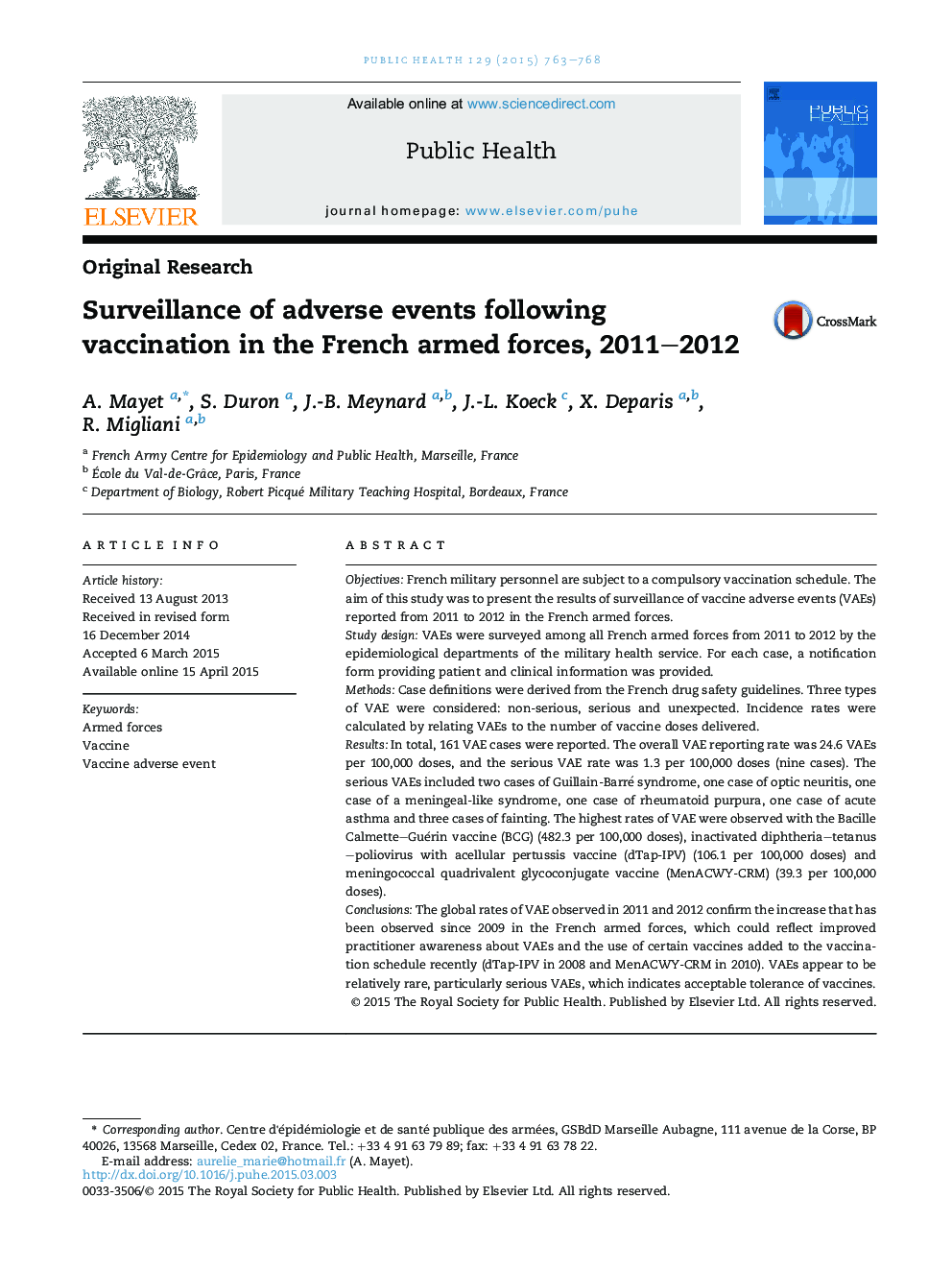| Article ID | Journal | Published Year | Pages | File Type |
|---|---|---|---|---|
| 1087351 | Public Health | 2015 | 6 Pages |
•This study describes vaccine adverse events (VAE) reported from 2011 to 2012 in the armed forces and focuses on MMR and MenACWY-CRM vaccines.•The global VAE reporting rate was 25.7 VAE per 100,000 injections and the serious VAE rate was 1.3 per 100,000.•An increase in VAE was observed in the armed forces from 2009, which could reflect improved practitioner awareness towards VAE and the recent use of some vaccines.•We conclude that there is an acceptable tolerance of vaccines.
ObjectivesFrench military personnel are subject to a compulsory vaccination schedule. The aim of this study was to present the results of surveillance of vaccine adverse events (VAEs) reported from 2011 to 2012 in the French armed forces.Study designVAEs were surveyed among all French armed forces from 2011 to 2012 by the epidemiological departments of the military health service. For each case, a notification form providing patient and clinical information was provided.MethodsCase definitions were derived from the French drug safety guidelines. Three types of VAE were considered: non-serious, serious and unexpected. Incidence rates were calculated by relating VAEs to the number of vaccine doses delivered.ResultsIn total, 161 VAE cases were reported. The overall VAE reporting rate was 24.6 VAEs per 100,000 doses, and the serious VAE rate was 1.3 per 100,000 doses (nine cases). The serious VAEs included two cases of Guillain-Barré syndrome, one case of optic neuritis, one case of a meningeal-like syndrome, one case of rheumatoid purpura, one case of acute asthma and three cases of fainting. The highest rates of VAE were observed with the Bacille Calmette–Guérin vaccine (BCG) (482.3 per 100,000 doses), inactivated diphtheria–tetanus–poliovirus with acellular pertussis vaccine (dTap-IPV) (106.1 per 100,000 doses) and meningococcal quadrivalent glycoconjugate vaccine (MenACWY-CRM) (39.3 per 100,000 doses).ConclusionsThe global rates of VAE observed in 2011 and 2012 confirm the increase that has been observed since 2009 in the French armed forces, which could reflect improved practitioner awareness about VAEs and the use of certain vaccines added to the vaccination schedule recently (dTap-IPV in 2008 and MenACWY-CRM in 2010). VAEs appear to be relatively rare, particularly serious VAEs, which indicates acceptable tolerance of vaccines.
